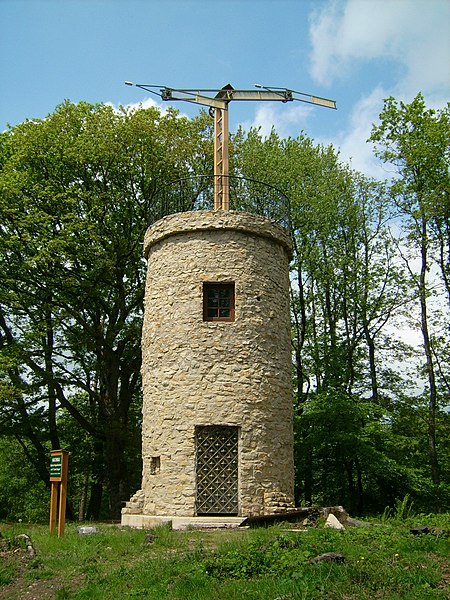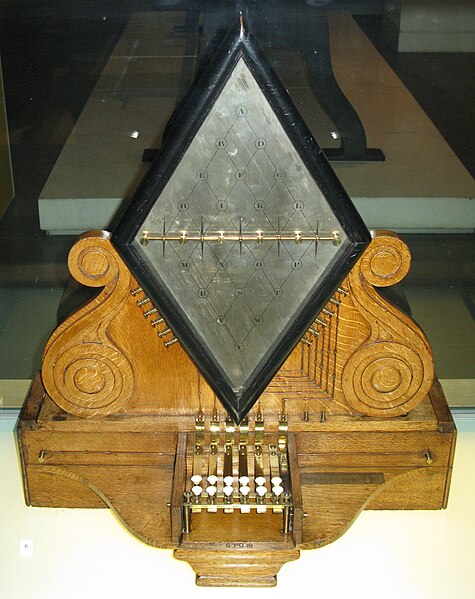Telegraphy is the long-distance transmission of messages where the sender uses symbolic codes, known to the recipient, rather than a physical exchange of an object bearing the message. Thus flag semaphore is a method of telegraphy, whereas pigeon post is not. Ancient signalling systems, although sometimes quite extensive and sophisticated as in China, were generally not capable of transmitting arbitrary text messages. Possible messages were fixed and predetermined, so such systems are thus not true telegraphs.
Replica of a Chappe telegraph on the Litermont near Nalbach, Germany
Great Wall of China
Cooke and Wheatstone's five-needle, six-wire telegraph (1837)
A Morse key (c. 1900)
Pigeon post is the use of homing pigeons to carry messages. Pigeons are effective as messengers due to their natural homing abilities. The pigeons are transported to a destination in cages, where they are attached with messages, then the pigeon naturally flies back to its home where the recipient could read the message. They have been used in many places around the world. Pigeons have also been used to great effect in military situations, and are in this case referred to as war pigeons.
Young lady in oriental clothing with a homing pigeon (19th century painting)
Pigeon post (1843 painting by Miklós Barabás)
Siege of Paris 1870–1871, pigeon post medal by the artist Charles Degeorge.
Dispatches (service des dépêches par pigeons voyageurs) connecting the French communication lines during the Siege of Paris in the Franco-Prussian War, 1870–1871. (Smithsonian National Postal Museum)








